Hunting for Trend Days Part 3: Case Studies and Psychology
Welcome to the final instalment of our series on hunting for trend days. In Part 1, we covered the fundamental characteristics of trend days and essential tools for identifying them early. Part 2 delved into advanced strategies for maximising opportunities and effectively managing trades during trend days. Now, let's explore case studies of successful trend day trades and delve into the psychology behind trading trend days.
Welcome to the final instalment of our series on hunting for trend days. In Part 1, we covered the fundamental characteristics of trend days and essential tools for identifying them early. Part 2 delved into advanced strategies for maximising opportunities and effectively managing trades during trend days. Now, let's explore case studies of successful trend day trades and delve into the psychology behind trading trend days.
Case Studies
Here are some real-world examples of how trades can be taken and managed on trend days using the techniques covered in Part 1 and Part 2.
Each example will be viewed through the prism of the three C’s – Context, Catalyst, and Consistency.
Context refers to conducting higher timeframe analysis on the daily candle chart. Catalyst refers to the confluence of evidence that a trend day is taking place. And Consistency refers to how we consistently select and manage trend day trades on the 5min candle chart.
Case Study 1: EUR/USD
Context:
The higher timeframe daily candle chart provides valuable context for the impending trend day. We can clearly see that daily trading ranges have been contracting for several consecutive days. This puts day traders on high alert for an expansive range day in either direction.
15th Jan 2024: EUR/USD Daily Candle Chart
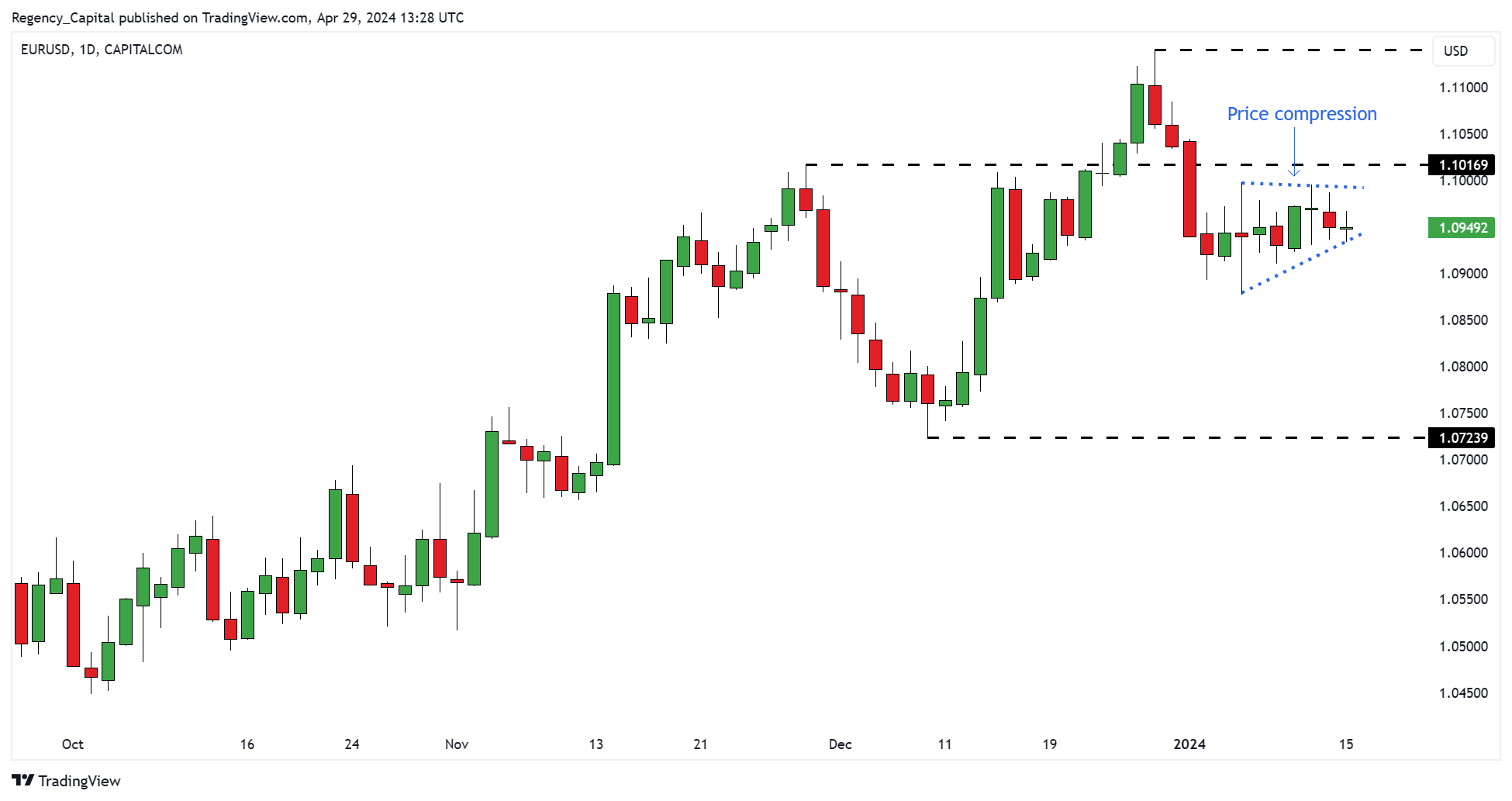 (Past performance is not a reliable indicator of future results)
(Past performance is not a reliable indicator of future results)
Catalyst:
The following day, at the start of European trading, EUR/USD has already broken and held below the prior days low (PDL). EUR/USD has also broke below the daily compression pattern (highlighted above) and the market is holding below a downward sloping volume weighted average VWAP. This is enough confluence of evidence that a trend day is taking place and traders can start to position themselves accordingly.
16th Jan 2024: EUR/USD 5min Candle Chart
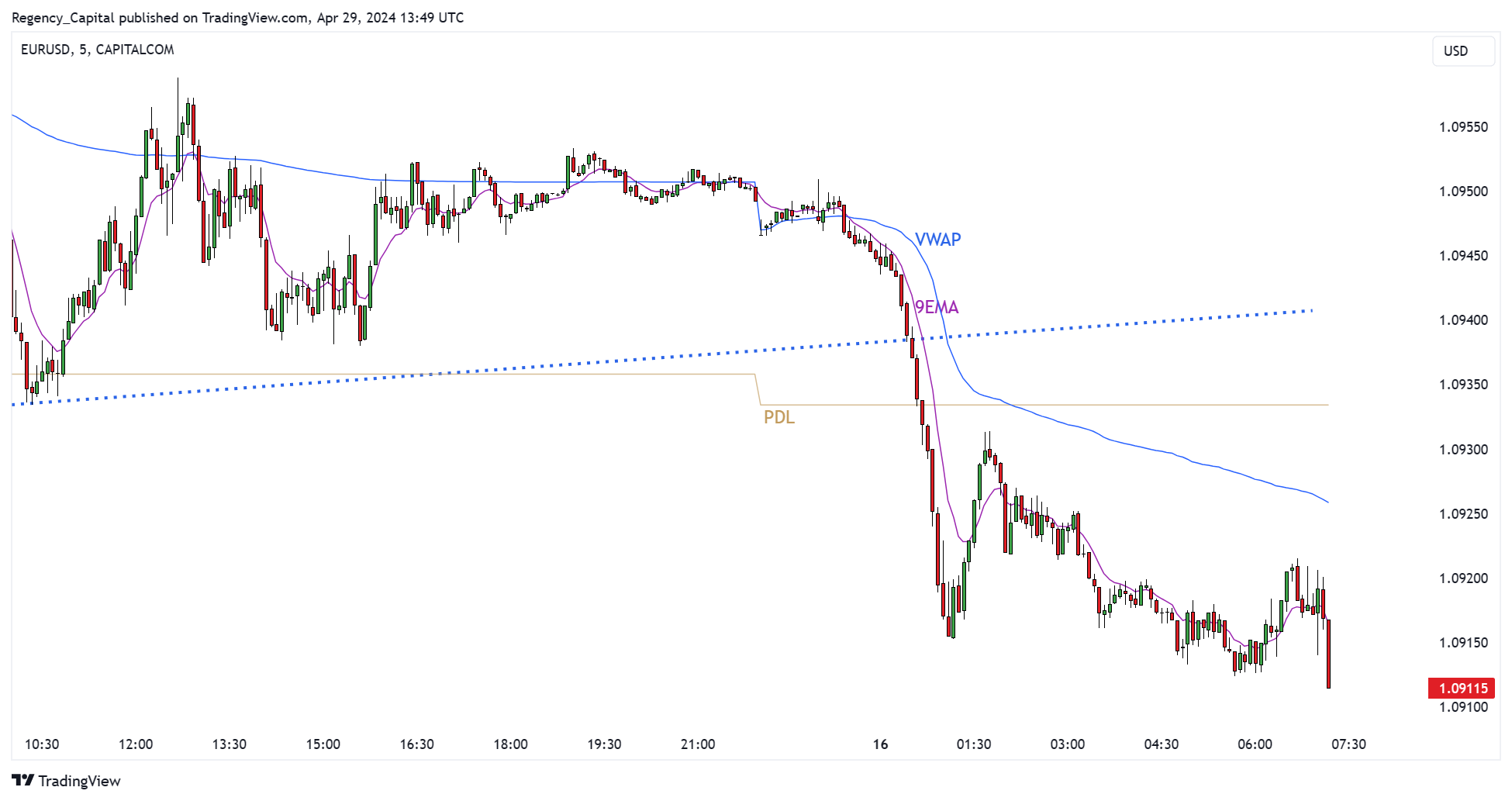 (Past performance is not a reliable indicator of future results)
(Past performance is not a reliable indicator of future results)
Consistency:
Entering managing trades on trend days should not be over complicated, the most important aspect is consistency of method and approach.
A simple trend following day trading entry and exit technique can be employed on trend days:
Entry: Break below swing support and 9 period EMA
Exit: Break and close above 9 period EMA.
(Blue arrows = Entry, Red arrows = Exit)
16th Jan 2024: EUR/USD 5min Candle Chart
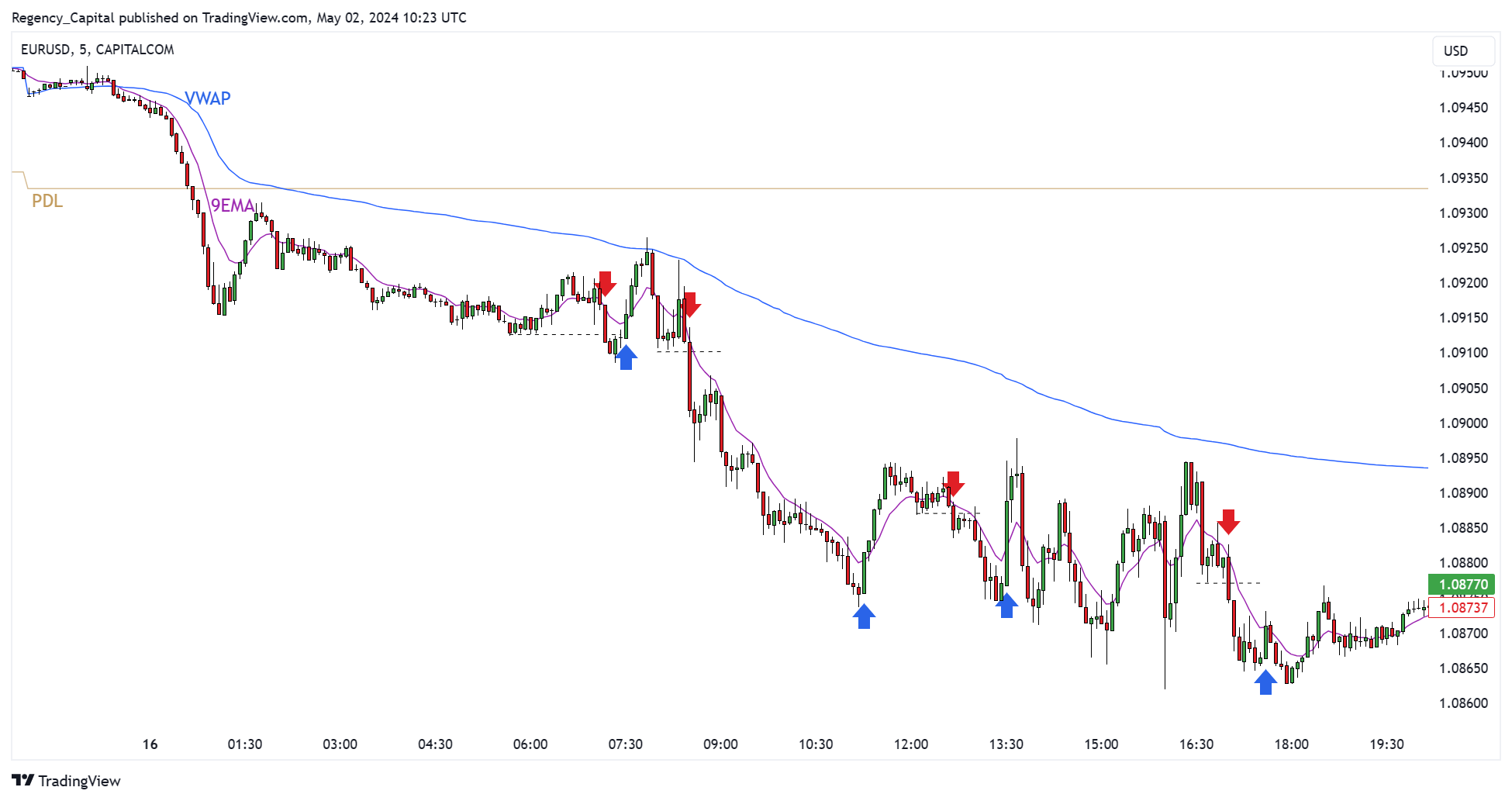 (Past performance is not a reliable indicator of future results)
(Past performance is not a reliable indicator of future results)
Case Study 2: Apple (AAPL)
Context:
Again, the higher timeframe context is key. As Apple’s share price approached a key level of long-term support the daily ranges started to contract and the market started to consolidate within a falling wedge pattern. This puts day traders on high alert for an expansive range day in either direction.
10th APR 2024: AAPL Daily Candle Chart
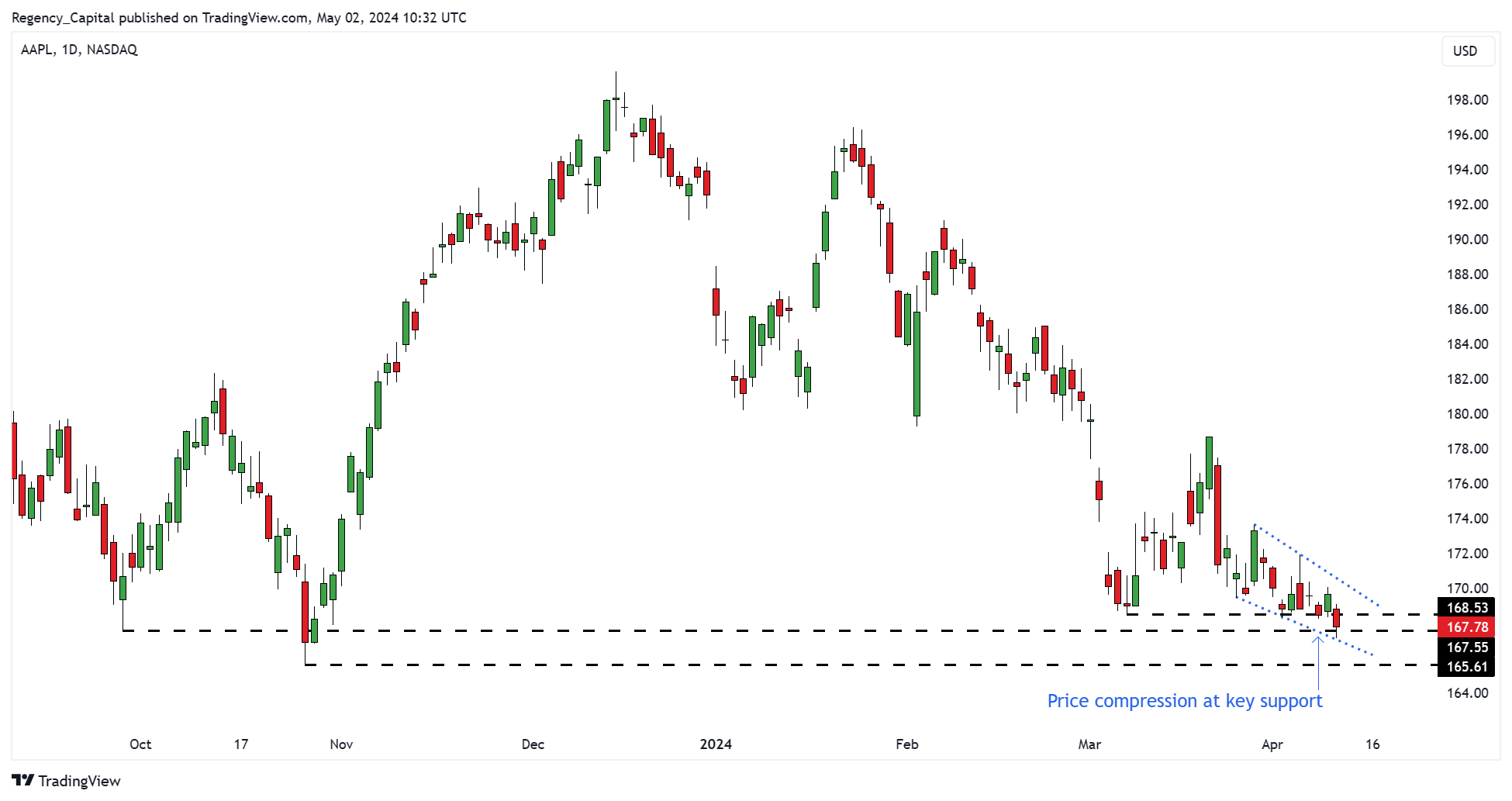 (Past performance is not a reliable indicator of future results)
(Past performance is not a reliable indicator of future results)
Catalyst:
Prior to the trend day developing there were several early warning signs within the first hour of trading. Having gapped slightly higher at the open, the shares broke and held above the PDH. Price was also holding above an upward sloping VWAP and breaking above the falling wedge consolidation pattern that formed on the daily candle chart.
11th APR 2024: AAPL 5min Candle Chart
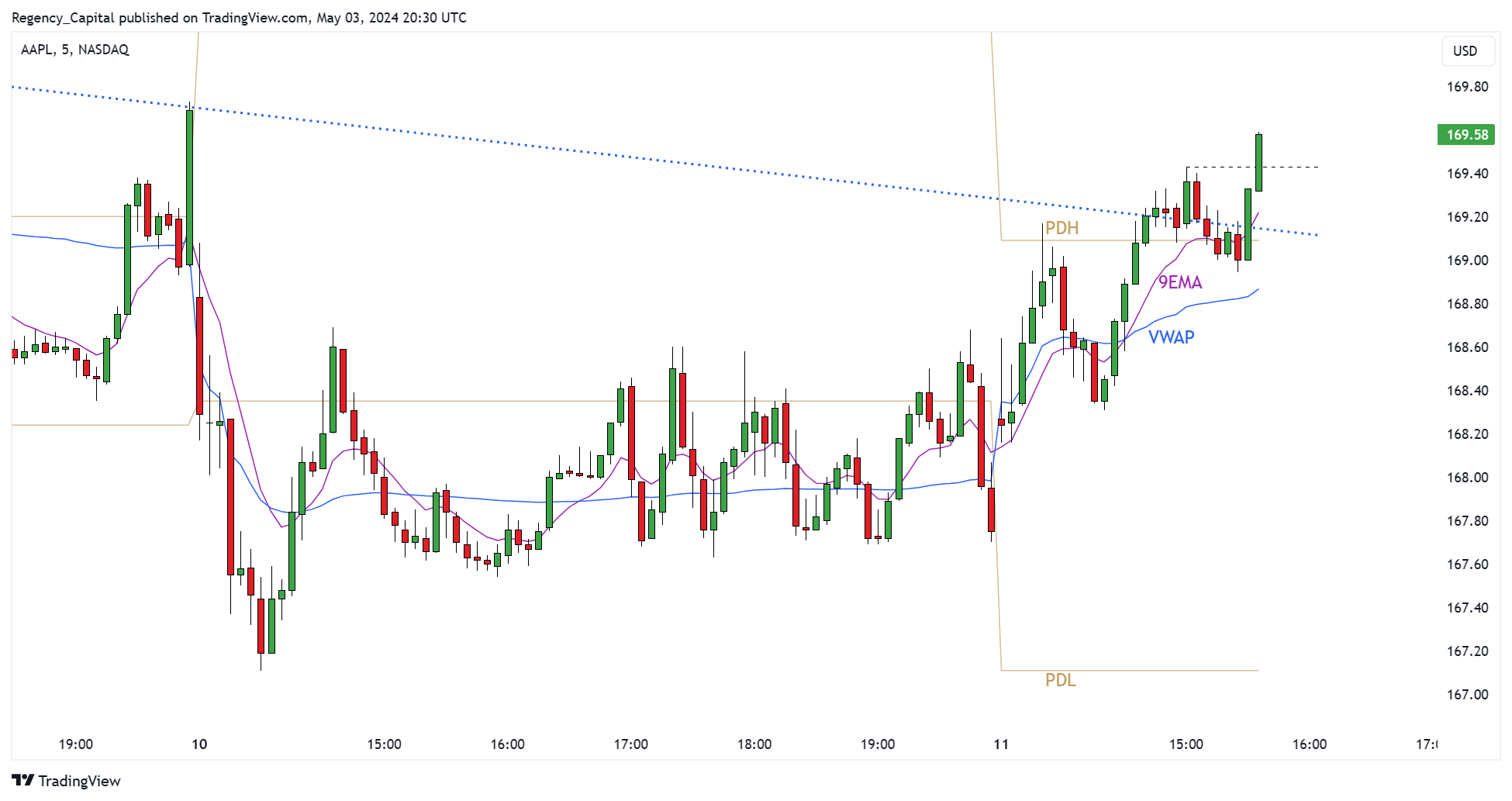 (Past performance is not a reliable indicator of future results)
(Past performance is not a reliable indicator of future results)
Consistency:
Again, a simple trend following day trading entry and exit technique proves effective.
Entry: Break below swing support and 9 period EMA
Exit: Break and close above 9 period EMA.
(Blue arrows = Entry, Red arrows = Exit)
11th APR 2024: AAPL 5min Candle Chart
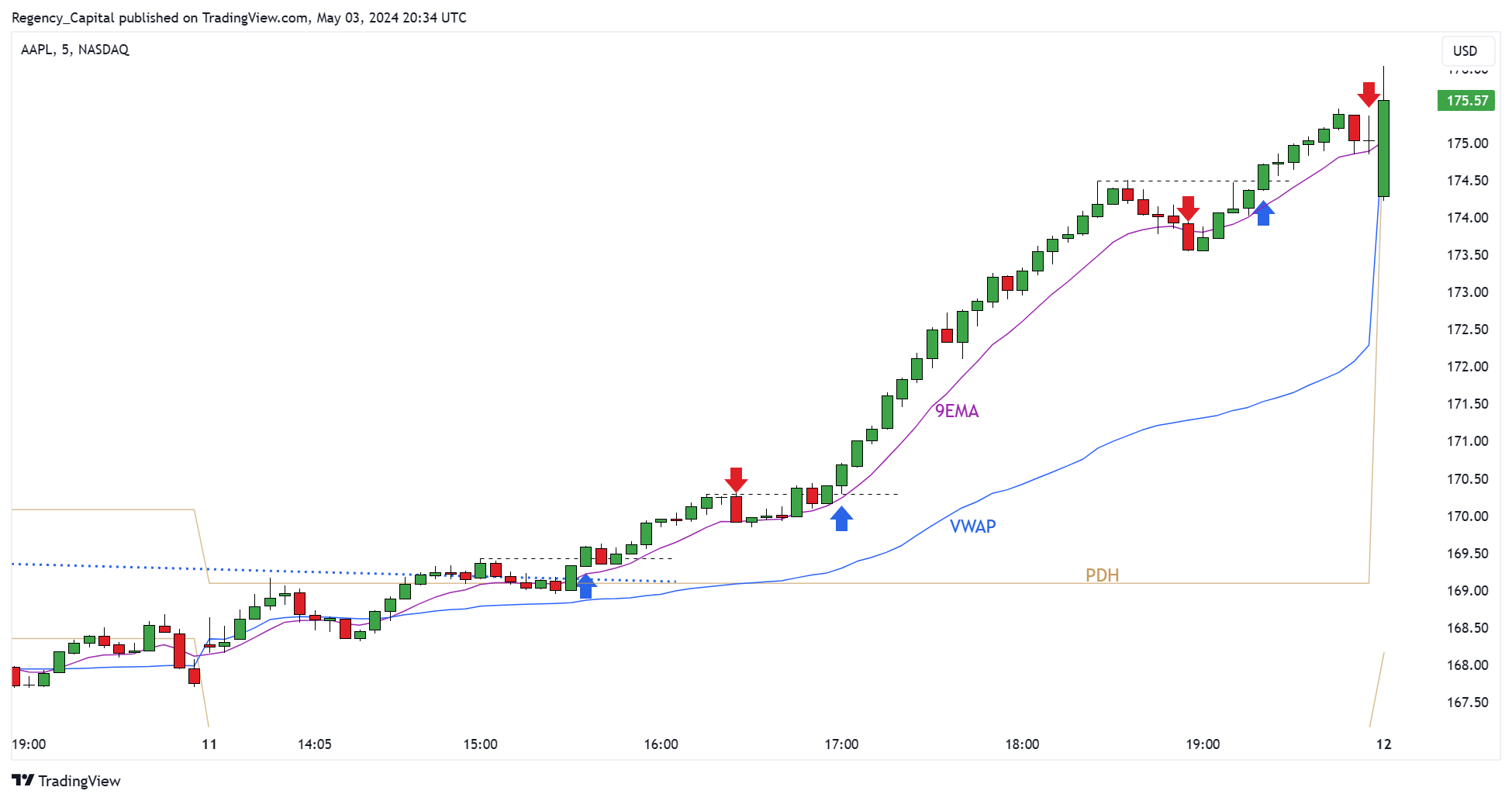 (Past performance is not a reliable indicator of future results)
(Past performance is not a reliable indicator of future results)
Psychological Insights
-
1. Patience and Discipline:
Successful trading during trend days requires patience and discipline. It's essential to wait for confirmation of the trend and avoid impulsive decisions based on emotions or fear of missing out (FOMO). Stick to your trading plan and only take high-probability setups that align with your strategy.
-
2. Flexibility and Adaptability:
While it's crucial to have a trading plan, it's also essential to remain flexible and adapt to changing market conditions during trend days. Be willing to adjust your strategy based on evolving price action and market dynamics, and don't hesitate to cut losses when necessary.
-
3. Emotional Control:
Managing emotions such as greed, fear, and overconfidence is critical for successful trading during trend days. Avoid letting emotions dictate your trading decisions and maintain a rational and objective mindset at all times. Remember that losses are part of trading, and it's essential to stay focused on long-term profitability.
Conclusion
Pursuing trend days can present both opportunities and challenges for day traders. While traders may benefit from consistent trending price movements, it's crucial to identify trend days early, apply effective trading strategies, and maintain psychological discipline to navigate the potential risks successfully.
We hope this series has provided valuable insights and practical techniques for navigating trend days with confidence and competence. Remember to continuously refine your skills, adapt to changing market conditions, and always prioritise risk management.
Happy trading, and may the trend days be ever in your favour!